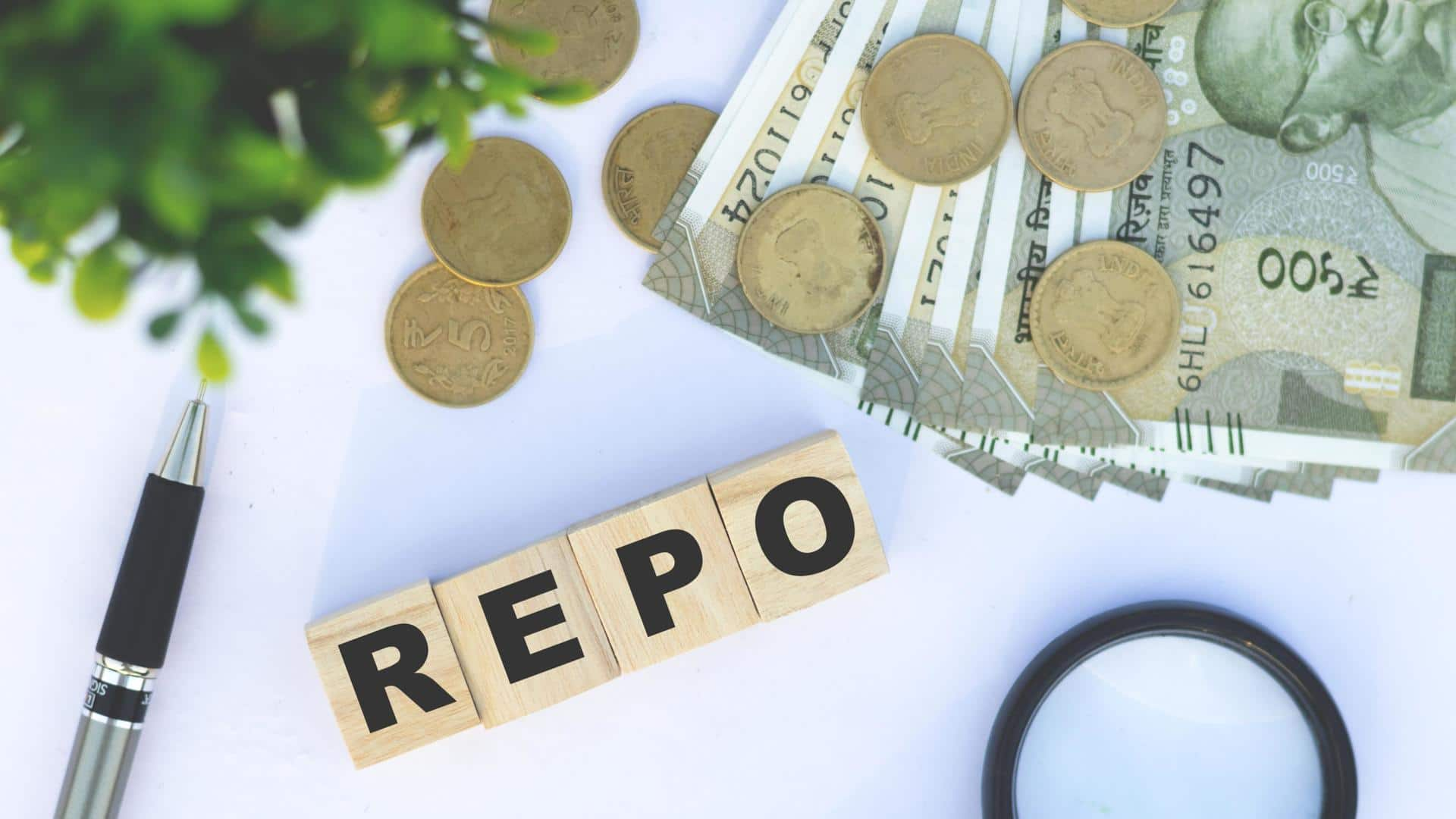
#NewsBytesExplainer: How does repo rate affect the common man
What's the story
The Reserve Bank of India (RBI) has hiked India's repo rate for the sixth time since May 2022. Have you ever wondered why it becomes big news when the RBI hikes or lowers the repo rate? To understand the implication of such a decision, we must first understand the repo rate. Then, we will see its impact on the commoner.
Borrowing
Why do banks borrow from RBI?
People borrow money from banks, but when the banks need money, where do they go? In India, they go to RBI. Yes, RBI is the banker to banks in the country. So why do they need to borrow money? Banks borrow from the central bank when there is a shortage of funds or to maintain the cash reserve ratio (CRR).
Information
What is the cash reserve ratio?
CRR is the percentage of a bank's total deposits that it needs to maintain as liquid cash. The CRR is prescribed by RBI in India. Banks do not keep this reserve themselves. Instead, it is kept in an account with RBI to ensure financial security.
Repo rate
What is the repo rate?
Now that you know what CRR is, let's get into the matter at hand-repo rate. Banks charge interest on loans they provide to customers. Similarly, when commercial banks borrow money from the RBI to take care of their short-term liquidity needs, the RBI too charges interest. The interest rate at which RBI lends money to commercial banks is called the repo rate.
Repurchase
Banks can repurchase the collateral they submit
In banking, repo stands for 'repurchase option.' When banks approach RBI for short-term loans, the central bank provides this against government securities issued by the central or state governments, such as treasury bills or government bonds. The collateral banks submit while seeking loans from RBI can be repurchased when they repay the loan. Hence, it is called a 'repurchase option' or 'repurchase agreement.'
Monetary policy
Repo rate is part of RBI's monetary policy regime
Repo rate is one of the tools available to RBI under its monetary policy regime. The central bank uses monetary policy to maintain price stability while keeping in mind the objective of growth. RBI controls the demand side of the economy with monetary policy. Decisions related to monetary policy are taken by RBI's Monetary Policy Committee (MPC).
Use
RBI uses repo rate to regulate cash flow and liquidity
Let's now understand how RBI uses repo rate. It uses the repo rate to regulate the cash flow and liquidity in the market. The primary target of the repo rate has always been inflation. How are inflation, cash flow, liquidity, and the repo rate related? Well, let's take a look.
Hike
Increase in repo rate will reduce inflation in the economy
When the RBI hikes the repo rate, banks will have to shell out more money to borrow from the central bank. This results in higher interest rates on loans they give out to customers. An increase in the cost of public borrowing will reduce the money supply or liquidity. The reduced money supply leads to a decrease in consumption demand, controlling inflation.
Reduction
Decrease in repo rate fuels economic growth
At the same time, if RBI lowers the repo rate, commercial banks will pay lesser to the central bank. This will also trickle down to the end consumer. When banks pay less to the RBI, they will be willing to pass down the benefit to consumers. This, in turn, increases consumption and investment in the economy, fueling economic growth.
Impact on loans
Loans become expensive when RBI hikes repo rate
As we discussed earlier, one of the significant impacts of the repo rate is on loans granted by commercial banks. Home loans, vehicle loans, educational loans, personal loans, mortgages, and credit cards are all affected by a repo rate hike. An increase in borrowing costs discourages the commoner from making unnecessary purchases. This affects the demand for goods and services in the economy.
Deposits
Repo rate hikes promote a saving mentality in consumers
At the same time, an increase in the repo rate is beneficial for people with savings and fixed deposits. As banks hike interest rates, the interest on deposits also increases. Therefore, a repo rate hike promotes a saving mentality in consumers. When consumers save more, it again reduces demand. When the demand decreases, the price also decreases. This, in turn, reduces inflation.